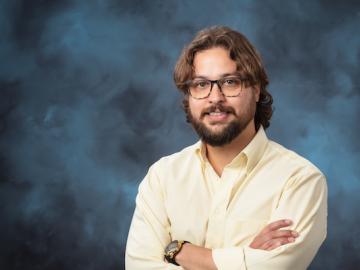
Filter News
Area of Research
- (-) National Security (37)
- (-) Neutron Science (34)
- (-) Supercomputing (73)
- Advanced Manufacturing (22)
- Biology and Environment (30)
- Building Technologies (4)
- Computational Engineering (1)
- Computer Science (9)
- Electricity and Smart Grid (3)
- Energy Science (172)
- Functional Materials for Energy (1)
- Fusion and Fission (10)
- Fusion Energy (3)
- Isotope Development and Production (1)
- Isotopes (4)
- Materials (104)
- Materials Characterization (1)
- Materials for Computing (16)
- Materials Under Extremes (1)
- Nuclear Science and Technology (11)
- Quantum information Science (2)
- Sensors and Controls (1)
- Transportation Systems (1)
News Topics
- (-) 3-D Printing/Advanced Manufacturing (12)
- (-) Buildings (4)
- (-) Cybersecurity (23)
- (-) Fossil Energy (1)
- (-) Frontier (33)
- (-) Grid (11)
- (-) Machine Learning (26)
- (-) Materials Science (33)
- (-) Space Exploration (5)
- Advanced Reactors (3)
- Artificial Intelligence (49)
- Big Data (26)
- Bioenergy (16)
- Biology (18)
- Biomedical (28)
- Biotechnology (3)
- Chemical Sciences (7)
- Clean Water (2)
- Composites (1)
- Computer Science (108)
- Coronavirus (21)
- Critical Materials (3)
- Energy Storage (15)
- Environment (33)
- Exascale Computing (26)
- Fusion (3)
- High-Performance Computing (46)
- Hydropower (1)
- Isotopes (2)
- Materials (29)
- Mathematics (2)
- Microscopy (8)
- Molten Salt (1)
- Nanotechnology (19)
- National Security (36)
- Neutron Science (122)
- Nuclear Energy (10)
- Partnerships (5)
- Physics (18)
- Polymers (3)
- Quantum Computing (20)
- Quantum Science (31)
- Security (15)
- Simulation (16)
- Software (1)
- Summit (43)
- Transportation (12)
Media Contacts

In human security research, Thomaz Carvalhaes says, there are typically two perspectives: technocentric and human centric. Rather than pick just one for his work, Carvalhaes uses data from both perspectives to understand how technology impacts the lives of people.

Two years after ORNL provided a model of nearly every building in America, commercial partners are using the tool for tasks ranging from designing energy-efficient buildings and cities to linking energy efficiency to real estate value and risk.

When Hurricane Maria battered Puerto Rico in 2017, winds snapped trees and destroyed homes, while heavy rains transformed streets into rivers. But after the storm passed, the human toll continued to grow as residents struggled without electricity for months. Five years later, power outages remain long and frequent.

Researchers at the Department of Energy’s Oak Ridge National Laboratory and their technologies have received seven 2022 R&D 100 Awards, plus special recognition for a battery-related green technology product.

Though Nell Barber wasn’t sure what her future held after graduating with a bachelor’s degree in psychology, she now uses her interest in human behavior to design systems that leverage machine learning algorithms to identify faces in a crowd.

Doug Kothe has been named associate laboratory director for the Computing and Computational Sciences Directorate at ORNL, effective June 6.

The Frontier supercomputer at the Department of Energy’s Oak Ridge National Laboratory earned the top ranking today as the world’s fastest on the 59th TOP500 list, with 1.1 exaflops of performance. The system is the first to achieve an unprecedented level of computing performance known as exascale, a threshold of a quintillion calculations per second.

How an Alvin M. Weinberg Fellow is increasing security for critical infrastructure components

Researchers at ORNL are teaching microscopes to drive discoveries with an intuitive algorithm, developed at the lab’s Center for Nanophase Materials Sciences, that could guide breakthroughs in new materials for energy technologies, sensing and computing.

A team of researchers has developed a novel, machine learning–based technique to explore and identify relationships among medical concepts using electronic health record data across multiple healthcare providers.


